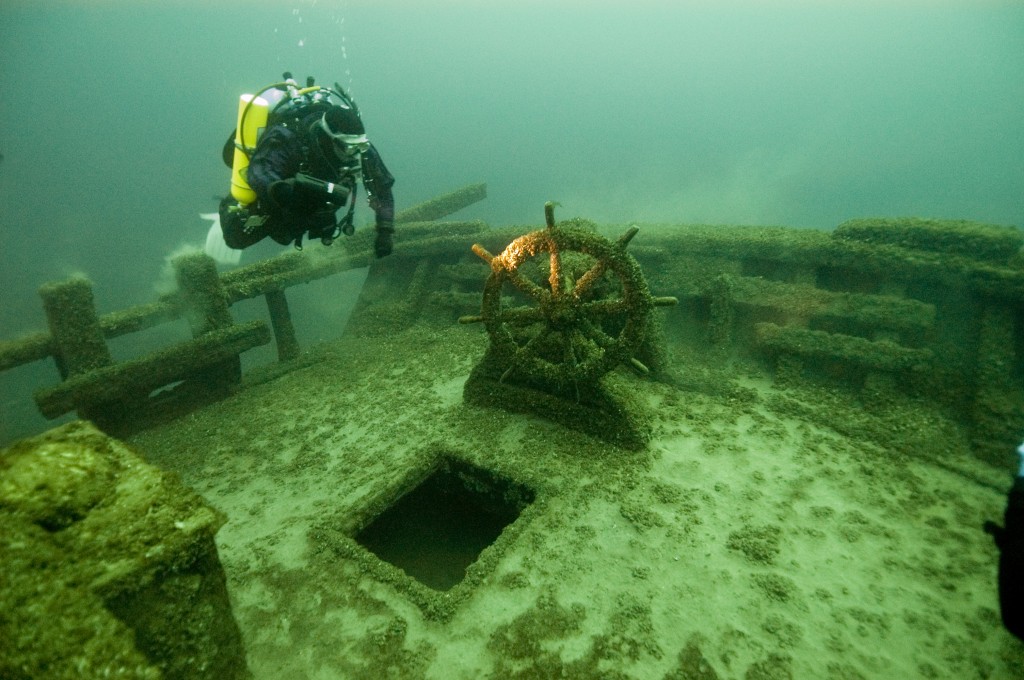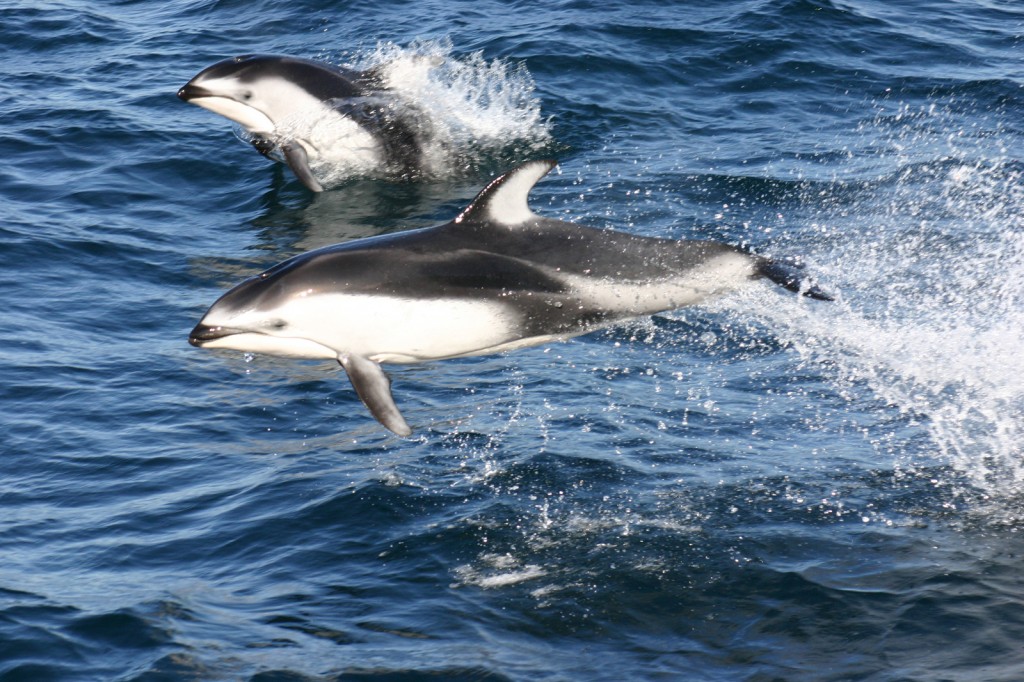
From New England’s Stellwagen Bank, summer feeding grounds of the North Atlantic right whale, to the final resting place of the USS Monitor off of Cape Hatteras, our country’s coastline is ringed by a network of marine sanctuaries. These sites, designated by Congress as nationally or culturally significant, may not be as renowned as America’s national parks, but they are just as vital: the Channel Islands, the Florida Keys, the Olympic Coast, and others are hotbeds of biodiversity and beauty.
Since 2009 Jason Patlis has served as President and CEO of the National Marine Sanctuary Foundation (NMSF), a non-profit that helps to protect these special places. Mr. Patlis, who has more than two decades of experience in law, policy, and finance both in the US and abroad, recently sat down with Sage to talk about the work of his organization, election-year politics, and why humans are so biased for terrestrial ecosystems.
Sage: As the president and CEO of the National Marine Sanctuary Foundation, you work at the intersection of environmental law, policy, and economics. What are the goals of your foundation?
Jason Patlis: In our policy work, we seek to ensure that there is adequate federal funding for the national marine sanctuary system. In this era of shrinking federal budgets, we want to make sure that national marine sanctuaries get the Congressional appropriations they need. We also seek to demonstrate the importance of sanctuaries as a model for, and component of, ocean governance. For example, after the BP oil spill crisis in 2010, President Obama established a commission and task force to develop a plan to restore the Gulf of Mexico. Our foundation advocated that national marine sanctuaries be considered a part of the solution, and the Presidential commissions agreed with us.
Sage: How are national marine sanctuaries unique compared to other marine protected areas?
Jason Patlis: First, the fact that they contain natural or cultural resources of national significance gives them a stature other marine protected areas do not have. Consider that the very first sanctuary was the underwater resting place of the USS Monitor, the Civil War ironclad that revolutionized naval engineering and serves as an icon in American history. Other sanctuaries include the coral reefs of the Florida Keys, the waters surrounding the Hawaiian Islands, and the fisheries grounds of Monterey Bay and waters off Cape Cod – waters that have shaped the United States over its history.
Second, national marine sanctuaries are unique because they serve a variety of purposes. Besides the protection of natural and cultural resources, as well as endangered species, sanctuaries can promote recreational activities like diving, boating and fishing, and can allow commercial activities associated with economic profits (e.g., commercial fisheries, transportation and commerce, and energy production). NOAA seeks to strike a balance between the development of these interests and protecting the assets of the sanctuary—the habitat, species, and biological resources.
Sage: A large percentage of the world’s terrestrial environment is protected, but only a fraction of oceans are protected. Why is that?
Jason Patlis: Land management has always received more attention and resources than marine resource management. One basic reason for this is simply the bias we have as terrestrial creatures. From the Industrial Revolution in the late 19th Century — with the development of common law remedies against pollution — through today — with the enactment of major environmental laws and regulations — we have always focused on human impacts to our immediate surroundings.
At present, only one percent of the ocean is protected in some manner. The United Nations advocates that at least 10 percent of the ocean be protected, and we are striving to reach that goal. In the U.S., the comparison is stark: There are almost 400 national parks, more than 100 national monuments, 530 national fish and wildlife refuges, 155 national forests, and 756 national wilderness areas. And only 14 national marine sanctuaries.
Our knowledge and understanding of human impacts on the ocean are new and limited. For example, we only began to regulate land-based coastal and ocean pollution in the 1960s and 1970s. In the last two decades, science has finally made us aware of the rapid depletion of large fish across the ocean; the profound impacts of climate change; ocean acidification; and marine debris, with the existence of enormous garbage patches on the high seas.

Sage: What are the biggest institutional or legal barriers to establishing more marine sanctuaries on the coasts of the United States?
Jason Patlis: To begin with, the law itself does not make the designation of sanctuaries easy. The designation of a national marine sanctuary by NOAA is a bottom-up process that requires local, state, and federal engagement, and can take many years to complete.
On top of this, there are two specific obstacles to establishing more national marine sanctuaries. Prior to 1995, NOAA could consider petitions for new sanctuaries submitted by citizens. However, this list was deactivated in 1995, effectively withdrawing the petition process. With no formal process currently in place to petition and recommend new sites, the public cannot fully engage NOAA for new sanctuaries.
The second obstacle was created by Congress itself. In 2000, Congress reauthorized the National Marine Sanctuaries Act, and one of its provisions was a requirement that NOAA prove it had enough funds to manage the existing national marine sanctuary system before new sanctuaries could be created. But it would be near to impossible to show that NOAA has enough money to meet all of the demands on the sanctuary system. We view this as a “de facto” moratorium—one that doesn’t explicitly prohibit the establishment of new sanctuaries, but one that sets an impossible standard that thwarts the establishment of new sites.
Sage: In your opinion, what are the threats facing the national marine sanctuaries?
Jason Patlis: Some threats are specific and localized. For instance, some sanctuaries may suffer from overfishing or use of destructive fishing techniques. Other sanctuaries, such as the Florida Keys National Marine Sanctuary or others with coral reefs, may suffer from unregulated recreational activities. Other sites may experience excessive economic activity such as oil and gas drilling or shipping traffic. Although none of these activities are barred outright within the sanctuary system, they all need to be monitored.
On a broader scale, national marine sanctuaries are being impacted by the same threats facing our oceans in general.Climate change due to increasing carbon dioxide emissions is the biggest threat to the planet, and this includes all marine ecosystems. With a changing climate, we are seeing ocean acidification, rising sea levels, and warming ocean temperatures.
Sage: On that note, hat do you think is the most pressing need in American environmental law concerning oceans and marine sanctuaries? How is your foundation addressing this need?
Jason Patlis: The most pressing need for the health of the planet is to reduce emissions of carbon dioxide and other greenhouse gases. The national marine sanctuaries cannot solve this problem, but they can play a valuable role in building resilience within the network of marine protected areas, which would help us adapt to a changing climate. Sanctuaries can also play a supporting role as ‘sentinel sites’: they can serve as consistent points of data to establish baselines and trends. Also, through the very nature of the local and inclusive management approach they have adopted, national marine sanctuaries can serve as vehicles for building public awareness.
This year, the National Marine Sanctuaries Act turns forty, but the last time it was reauthorized was in 2000. Technically it expired in 2005, and is still waiting to be reauthorized. This seven-year delay reflects Congressional inability to address major environmental laws. It does not seem likely the act will be reauthorized any time soon.
Short of reauthorization, Congress absolutely must repeal the moratorium against new sanctuaries. Congress must also ensure adequate funding for managing our national marine sanctuaries. Sanctuaries are economic engines for local communities through fishing, research, and tourism and recreation. For example, the Stellwagen Bank National Marine Sanctuary off Massachusetts is the number-one whale-watching destination in the world. Management of the sanctuary costs taxpayers under $2 million annually. In 2008 alone, tourists spent $126 million on commercial whale-watching trips there, supporting 31 businesses and almost 600 jobs. Taxpayers spend less than $3 million per year on the Monterey Bay National Marine Sanctuary off California, where a robust industry of marine research, education, and management of waters, wildlife, and resources employed over 2,100 people and had a budget of $291 million in 2012.
NMSF is working on three fronts: seeking to change congressional policy to remove the moratorium; seeking to change administrative policy to reactivate the process for consideration of new sites; and seeking to ensure adequate congressional funding for the program.

Sage: Do you think that ocean conservation was at all an election-year issue? Did Romney and Obama ever talk about national marine sanctuaries?
Jason Patlis: Environmental issues, and especially ocean issues, rarely rise to the level of Presidential campaign politics. That’s not to say that ocean issues weren’t affected by campaign rhetoric. Promises for increased offshore energy production, for example, could have a bearing on national marine sanctuaries.
Looking more generally at the political landscape in our nation’s capital, ocean governance can become a surrogate for other issues. For example, it never ceases to amaze me that ratification of the Convention on the Law of the Sea has become a lightning rod for certain political groups. This is a treaty that essentially serves as the ‘constitution of the ocean,’ and has been supported by every U.S. President since President George H.W. Bush, with our military leaders being the most vocal in their support for the treaty because it will enhance U.S. security interests. We are one of three countries in the world – alongside Libya and North Korea – that has not ratified the treaty. And it is only because of inside-the-beltway politics.
More relevant to national marine sanctuaries is the political tussle over President Obama’s executive order establishing the National Ocean Policy. It promotes marine and coastal spatial planning with a focus on specific places rather than specific sectors. This ‘place-based’ approach to managing the ocean is similar to land-based planning and zoning. It has the potential to revolutionize our management of ocean uses and embodies the very framework of place-based, multi-use ocean management that was adopted 40 years ago with the National Marine Sanctuaries Act. It is a true testament to the merit of national marine sanctuaries as a model for ocean governance. However, Republicans in the House of Representatives have opposed this plan and prohibited all funding for its implementation.
The basic fact, confirmed every four years, is that the environment is still not a top priority for the voting public in the United States, and therefore not a top priority for our political leaders. Every four years we are reminded of how much more work we have to do to make the public understand the importance of these issues.